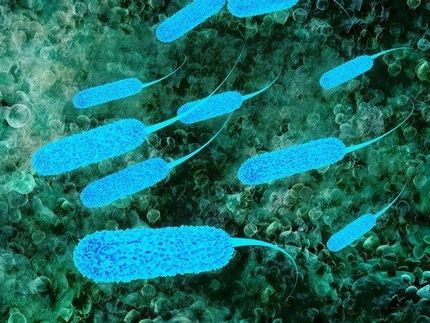Pitt researchers find candidates for new HIV drugs
While studying an HIV protein that plays an essential role in AIDS progression, researchers at the University of Pittsburgh School of Medicine have discovered compounds that show promise as novel treatments for the disease.
HIV drug discovery efforts have met with little success in finding compounds that interact with an important HIV virulence factor, called Nef, because it lacks biochemical activity that can be directly measured, explained Thomas E. Smithgall, Ph.D., William S. McEllroy Professor and Chair, Department of Microbiology and Molecular Genetics, and senior author of the paper, which was published last week in the early, online version of ACS Chemical Biology.
To get around that problem, Dr. Smithgall's team developed an assay to measure Nef function indirectly by coupling it to another protein, called Hck, which Nef activates in HIV-infected cells. Because Hck activity can be easily measured, the investigators were able to use it as a reporter for Nef activity in an automated high-throughput screening process. In collaboration with the University of Pittsburgh Drug Discovery Institute, they screened a library of 10,000 chemical compounds against the coupled proteins to see which ones influenced Nef-induced activation of Hck.
After further testing, they confirmed that three compounds inhibited the activity of the Nef-Hck complex and, more importantly, all of them also interfered with HIV replication. One compound was so effective that it suppressed HIV replication to undetectable levels in cell culture experiments.
"So we now have a way to rapidly and efficiently screen for inhibitors of Nef signaling through Hck," Dr. Smithgall said. "But the surprise was that some of those inhibitors also showed strong antiviral activity in cell culture models."
There is evidence that people infected with HIV variants that have mutations in the Nef gene take substantially longer to develop disease symptoms or AIDS, he said. In animal models, disrupting the production of Nef from the virus or its interaction with Hck also delays or prevents disease symptoms. The next challenge for the researchers will be to determine whether these compounds also interfere with progression of AIDS-like disease in animal models by blocking Nef function.
"Most current therapies for HIV infection use drugs that interfere with the function of viral enzymes such as reverse transcriptase or with the interaction of the virus and the host cell," Dr. Smithgall said. "Targeting Nef represents an entirely new approach that could be useful to deal with issues such as drug-resistant HIV strains, and may slow the progression to AIDS."
He added that Nef is just one of several so-called "accessory proteins" encoded by HIV which are important virulence factors in AIDS. Inhibitory compounds against some of the others might be revealed using a similar coupled protein approach for high throughput screening.
Topics
Organizations
Other news from the department science

Get the life science industry in your inbox
By submitting this form you agree that LUMITOS AG will send you the newsletter(s) selected above by email. Your data will not be passed on to third parties. Your data will be stored and processed in accordance with our data protection regulations. LUMITOS may contact you by email for the purpose of advertising or market and opinion surveys. You can revoke your consent at any time without giving reasons to LUMITOS AG, Ernst-Augustin-Str. 2, 12489 Berlin, Germany or by e-mail at revoke@lumitos.com with effect for the future. In addition, each email contains a link to unsubscribe from the corresponding newsletter.





















































